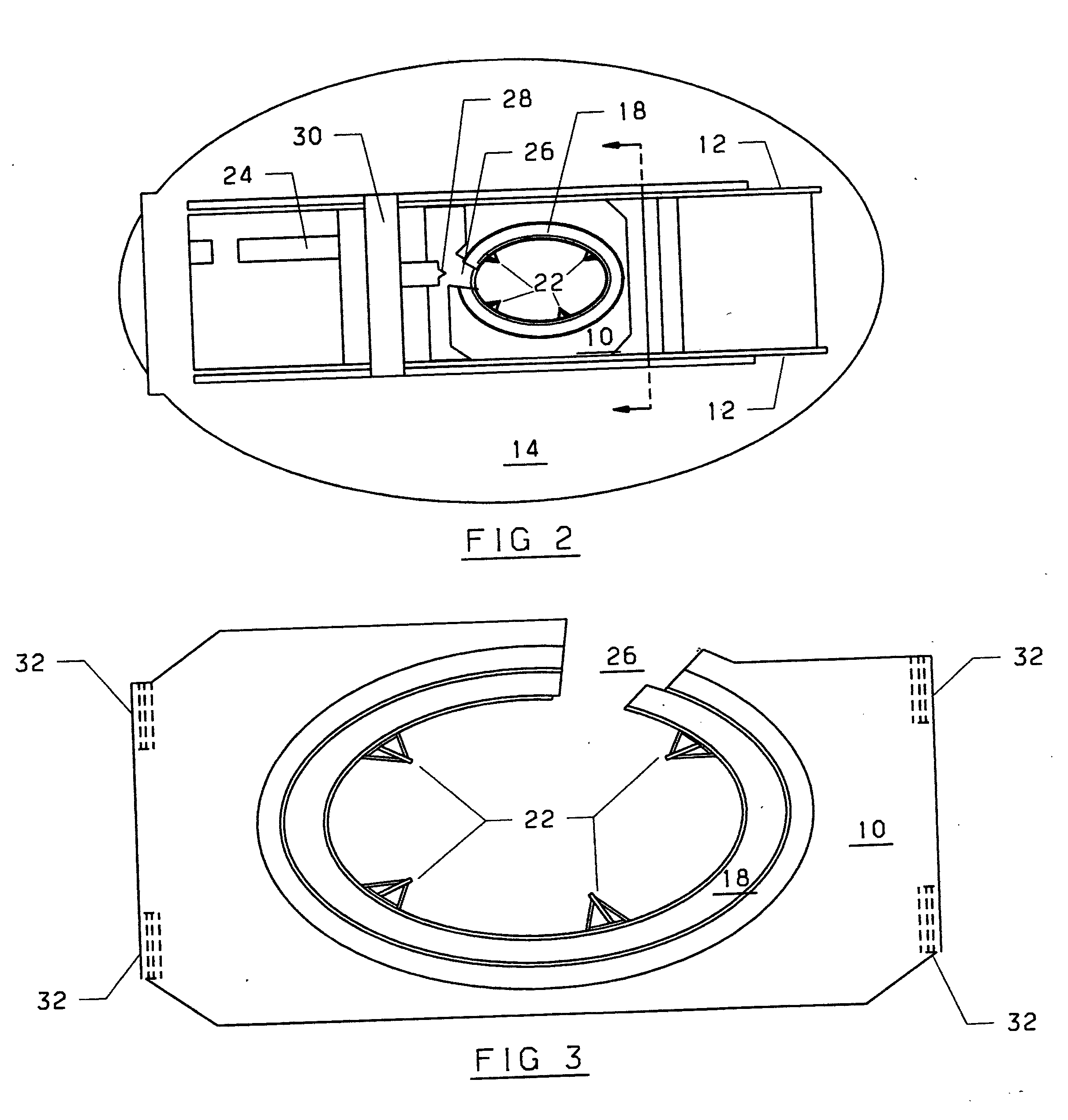Refueling work platform
a technology for refueling work platforms and work platforms, which is applied in the direction of nuclear engineering problems, greenhouse gas reduction, nuclear elements, etc., can solve the problems of limiting the usefulness of future fuel movement activities, requiring regular maintenance of electric distribution systems and instrument and control systems, and some inherent limitations in their effectiveness, so as to reduce undesirable effects, increase the number of jib hoists mounted on the platform, and enhance the ability
- Summary
- Abstract
- Description
- Claims
- Application Information
AI Technical Summary
Benefits of technology
Problems solved by technology
Method used
Image
Examples
Embodiment Construction
[0031] Referring now to the drawings and FIGS. 1-2 in particular a Refueling Work Platform (10) is shown which is movable on rails (12) already constructed across a reactor cavity (14) for the refueling process. The platform (10) has a central opening (16) having an arcuate personnel ring (18) that comprises a sealed 330 degree area with an open top to maximize the available working area for personnel and provide a larger work area than the prior art platforms. The platform has a radiation shielded wall (20) to protect the personnel from radiation. Mounted on the wall (20) are multiple independent jib hoists (22) having an approximate hoisting capacity of 500 pounds. This enhances the ability for personnel to perform multiple in-vessel tasks in parallel. The platform is designed to be rigid enough that secondary supports from existing reactor cavity structures (24) are not required.
[0032] The platform has a free entry area (26) located at one end of cavity (16) providing access for...
PUM
 Login to View More
Login to View More Abstract
Description
Claims
Application Information
 Login to View More
Login to View More - R&D
- Intellectual Property
- Life Sciences
- Materials
- Tech Scout
- Unparalleled Data Quality
- Higher Quality Content
- 60% Fewer Hallucinations
Browse by: Latest US Patents, China's latest patents, Technical Efficacy Thesaurus, Application Domain, Technology Topic, Popular Technical Reports.
© 2025 PatSnap. All rights reserved.Legal|Privacy policy|Modern Slavery Act Transparency Statement|Sitemap|About US| Contact US: help@patsnap.com



